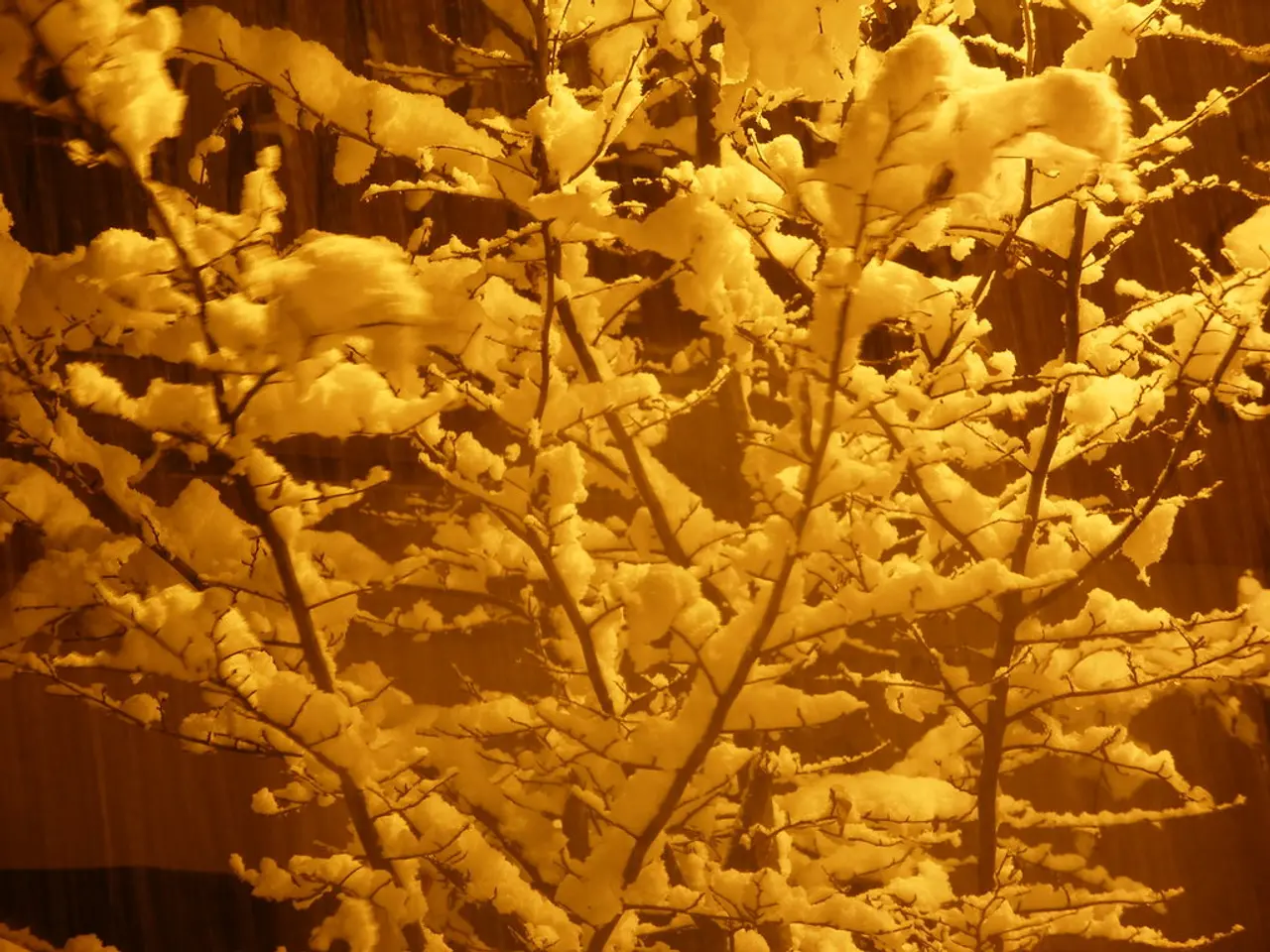Winter Tree Adornment: Creating Burlap Ties for a Chilly Appeal
Burlap tree wraps are a common method used to protect young or vulnerable trees during harsh weather conditions. Here's a guide on how to use and maintain burlap tree wraps effectively.
Firstly, it's essential to prepare the burlap before wrapping the tree. Start by cutting a piece of burlap long enough to wrap around the trunk with some overlap, and wide enough to cover the trunk comfortably. Before wrapping, inspect the tree for any branches or growth that might get in the way, and trim any excess branches or twigs as necessary.
The burlap should be positioned around the trunk, wrapped firmly but not too tightly, leaving some space between the burlap and the trunk to allow for airflow and growth. The burlap should be secured in place using twine or rope, starting at the top and tying knots every few inches to prevent unraveling. It's crucial to check the burlap after securing to ensure it is covering the trunk evenly and there are no gaps or loose ends.
When removing the burlap, untie any ropes or twine securing it to the tree, unwrap the burlap from the trunk carefully, and dispose of it properly or store it for future use if it's still in good condition. Regularly inspect the burlap for signs of wear and tear, and replace any damaged or worn-out burlap to ensure continued protection for the tree.
Burlap, although not completely waterproof, can benefit from natural oils to boost its water resistance. Linseed or soybean oil can be used to waterproof burlap, applied by spraying or brushing onto the fabric and allowing it to dry completely. Regularly inspect the burlap for signs of wear and tear and reapply waterproofing as needed to maintain its effectiveness.
Burlap tree wraps can last for approximately one to two seasons when used to wrap trees, depending on weather conditions and exposure to sunlight. To extend the lifespan of burlap tree wraps, it's essential to remove and replace them annually or as needed to avoid decay or damage to the tree bark underneath.
If the tree is particularly tall or prone to strong winds, stakes or landscape fabric pins may be used to hold the burlap in place. Proper storage of burlap involves storing it in a dry, cool place away from sunlight when not in use.
In addition to proper wrap maintenance, good overall tree care including pruning and pest prevention is crucial for the tree's health. Monitor the wraps regularly for signs of wear, moisture damage, or pest infestation and adjust or rewrap accordingly. Keeping mulch around the base of the tree is beneficial for preserving soil moisture, but avoiding contact between mulch and burlap is essential to prevent excess moisture retention against the tree trunk.
Avoiding exposure to de-icing salts near wrapped trees is also important, as these can damage the bark and roots. Proper wrap maintenance, combined with good overall tree care, will help burlap wraps last longer and better protect trees through harsh seasons.
When tending to your home-and-garden, pay attention to your lifestyle, particularly when it comes to gardening. Ensure that your burlap tree wraps, used to shield young trees during harsh weather, are well-maintained for effective protection. To maintain burlap tree wraps, regularly check for signs of wear and tear, replace damaged or worn-out burlap, and extend the lifespan of the wraps by removing and replacing them annually.




